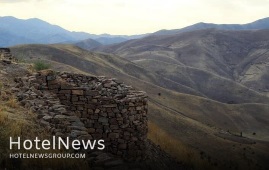
The ancient castle of Hassan-Abad in the western province of Kordestan is scheduled to be revived and restored in near future, the provincial tourism chief has said. The castle, which is estimated to date back to the Parthian era (247 BC – 224 CE) and the Sassanid era (224 CE–651), is one of the magnificent tourist attractions of the province, Yaqub Guylian announced on Saturday. The fortification was built to protect the residents of the nearby city and included residential houses as well as military equipment to help defend the city against invaders, the official added. Aside from the high wall of the castle, it also has three guard towers, each of which is 400 meters away from the main fence of the fortress, he explained. He also noted that the castle is only accessed through a southern part of the hill it sits on, and it is difficult to reach the castle. From very early history to modern times, defensive walls have often been necessary for cities to survive in an ever-changing world of invasion and conquest. Fortifications in antiquity were designed primarily to defeat attempts at the escalade, and to the defense of territories in warfare, and were also used to solidify rule in a region during peacetime. Uruk in ancient Sumer (Mesopotamia) is one of the world’s oldest known walled cities. The Ancient Egyptians also built fortresses on the frontiers of the Nile Valley to protect against invaders from neighboring territories. Many of the fortifications of the ancient world were built with mud brick, often leaving them no more than mounds of dirt for today’s archaeologists. The name Kordestan refers to the region’s principal inhabitants. After the Turkish invasion of Iran in the 11th century CE (Seljuq period), the name Kurdistan was applied to the region comprising the northwestern Zagros Mountains. It was during the reign of Abbas I the Great of Iran’s Safavid dynasty (1501–1736) that the Kurds rose to prominence, having been enlisted by Abbas I to help stem the attacks of the marauding Uzbeks from the east in the early 17th century.
Create: Apr 11, 2021 Edit: Apr 11, 2021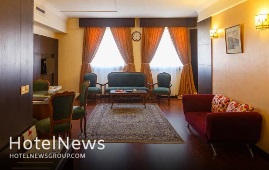
Iranian hotels and other accommodation units remain open as the fourth coronavirus wave gains momentum across the country. To curb the outbreak, President Hassan Rouhani on April 8 announced plans to close down all non-essential businesses, including bazaars and malls in cities color-coded 'red' or very high-risk for a ten-day period as of Saturday. “Hotels and other accommodation unite will be remaining open during the fourth coronavirus wave,” according to the Iranian Hoteliers Association, ISNA reported. The total number of coronavirus cases surged past the two million on Thursday as the new wave of infections has overwhelmed hospitals in all major cities. “We are expecting even more hospitalizations caused by the viral disease over the next few days,” Health Minister Saeed Namaki said on Friday. ICU beds are filled in many cities and the government is to set up makeshift hospitals to make room for more patients and advising patients to visit hospitals only if it is necessary. The number of coronavirus cases rose after millions traveled across the country during the Noruz holiday, which officially began on March 20. The Islamic Republic reported its highest number of daily coronavirus infections in more than three months period after millions challenged government guidelines and traveled during the two-week holiday. Before Noruz, health officials voiced concerns about the fourth COVID wave due to the traditional travels, mostly to visit family and loved ones. Authorities had urged people to limit travel and in-person visits, saying that travels during the Noruz festival could lead to another wave of infections across the country. President Hassan Rouhani declared new travel bans for cities situated in the “red” and “orange” zones to combat the new COVID-19 variant. Rouhani called on people to avoid traveling during the Iranian New Year holidays to help contain the spread of coronavirus. He said it would be forbidden to make trips to cities marked as “red” and “orange” in terms of the prevalence of COVID-19. “We request people to avoid traveling during Noruz holidays for the sake of their own health… It will be forbidden to travel to red and orange towns and cities,” he said. “No one should make any plans to travel to these cities,” he stressed. The Ministry of Health has classified districts based on the rate of coronavirus infections with red color indicating high risk, orange meaning medium, while yellow implied low risk and blue being the least.
Create: Apr 11, 2021 Edit: Apr 11, 2021
All outbound tours to Turkey have been canceled due to the spread of a new coronavirus variant, the secretary of the Association of Iranian Airlines has announced. According to the Interior Ministry, and the National Headquarters for Coronavirus Control, tourist tours to Turkey have been canceled until further notice, IRNA quoted Maqsoud Asadi Samani as saying on Tuesday. However, flights between Iran and Turkey are operated on schedule, the official added. Earlier this week the official announced that there is no plan at present to suspend flights to and from Turkey. He added that airlines flying to Turkey will immediately halt the service if the National Headquarters for Coronavirus Control votes to its suspension. Considering the widespread of the mutated coronavirus in Turkey, it is necessary to halt, by the next 48 hours, traveling via land and air borders to and from Turkey for a week, Namaki stressed. “Iranian citizens who are in Turkey and intend to turn back to the country, as well as Turkish citizens who are in Iran, can leave the country observing the relevant protocols and doing PCR test to make sure no infection spreads,” he highlighted in the letter. For Iranians entering the country from land and air borders, quarantine is also required for suspicious or positive cases, he stated. On February 22, the spokesman of Iran's Customs Administration Rouhollah Latifi said Iran has closed five crossing points with Iraq to prevent the spread of the UK variant of coronavirus, ISNA reported. Flights between the two neighbors have repeatedly been suspended in recent months for the sake of coronavirus concerns though passengers are required to observe strict health protocols and hold a well-being certificate with a negative coronavirus PCR test result.
Create: Apr 10, 2021 Edit: Apr 10, 2021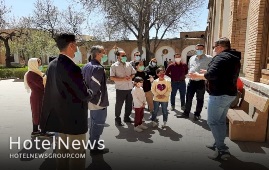
A total of 1,010,000 visits to the historical sites and tourist attractions of the western province of Kordestan was registered during the two-week New Year (Noruz) holidays (March 20-April 2), the provincial tourism chief announced on Monday. Travelers also made some 20,906 overnight stays in the official accommodation centers across the province during the mentioned time, Yaqub Guylian said. Some handicrafts exhibitions were also held during the period to promote the handmade products of the local artisans, the official added. He also mentioned that online visits and virtual tours of some of the province’s popular tourist attractions have been launched as well. Before the national holiday, President Hassan Rouhani declared new travel bans for cities situated in the “red” and “orange” zones to combat the new COVID-19 variant. Rouhani called on people to avoid traveling during the Iranian New Year holidays to help contain the spread of coronavirus. He said it would be forbidden to make trips to cities marked as “red” and “orange” in terms of the prevalence of COVID-19. “We request people to avoid traveling during Noruz holidays for the sake of their own health… It will be forbidden to travel to red and orange towns and cities,” he said. “No one should make any plans to travel to these cities,” he stressed. Late in February, the tourism minister said despite all the obstacles and issues and the outbreak of the coronavirus, the country’s tourism sector is still alive and dynamic. Noruz ceremonies and trips, if practiced under health protocols, could be beneficial for the revival of the tourism industry and handicrafts, which have been severely affected by the coronavirus pandemic in many provinces, the minister explained. Iranians traditionally make hundreds of thousands of domestic trips during the New Year holidays, when most businesses and workplaces are closed, as are schools.
Create: Apr 10, 2021 Edit: Apr 10, 2021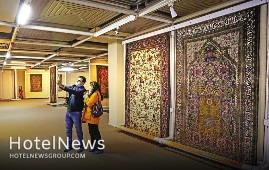
Visits to Iranian museums fell by one-fifth during the recent Iranian New Year (Noruz) holidays (March 19-April 2) in comparison to the same period two years ago, when the new coronavirus was not yet an issue. “Visits to cultural heritage museums fell by one-fifth during the Noruz holidays of the current year (1400) in comparison to the same period in the year 1398,” Mohammadreza Kargar, the director of museums and historical properties at the tourism ministry, announced on Saturday. “1,246,102 people visited cultural heritage museums [and sites] during this Noruz,” the official said without mentioning the number of visitors during the same period in 1398. Cultural heritage museums were closed during the Noruz holiday last year (1399) due to strict social distancing measures, the official said. Currently, 740 museums are active across Iran, of which 285 have been established since August 2013, when President Hassan Rouhani began his first administration, Kargar said in March. Back in 2018, he publicized that some three million historical objects were being kept at museums affiliated with the Cultural Heritage, Handicrafts, and Tourism Ministry. Iran is home to one of the world’s oldest continuous major civilizations, embracing settlements dating back to 4000 BC. It also hosts some of the world’s oldest cultural monuments including bazaars, museums, mosques, bridges, bathhouses, madrasas, gardens, rich natural, rural landscapes as well as 24 UNESCO World Heritage sites. The name of Iran, formerly known as Persia, mostly conjures up the first Persian Empire, ruled by the Achaemenids (ca. 550 – 330 BC) and sites such as Pasargadae and Persepolis. However, there are tens of prehistorical sites as the Burnt City in Sistan-Baluchestan, Tepe Sialk in Kashan, Susa and Chogha Zanbil in the Khuzestan province, and Ecbatana in Hamedan which predate the Achaemenid period. From a wider point of view, Iranian history can be divided into Pre-Islamic and Islamic eras. The Medes unified Iran as a nation and empire in 625 BC. The Islamic conquest of Persia (633–656) that put an end to the mighty Sassanid Empire (224–651) was a turning point in the history of the nation.
Create: Apr 5, 2021 Edit: Apr 5, 2021
German airline Lufthansa announced on Friday that it would resume flights from Frankfurt to Tehran from April 16. Lufthansa had suspended flights in January 2020 after the Islamic Republic accidentally downed a Ukrainian jetliner amid an exchange of hostilities with U.S. forces in Iraqi soil. The airline said it has since assessed security measures by Iran with national and international authorities. “The conditions for safe flight operations in Iranian airspace are currently in place,” it said in an emailed statement, Reuters reported. In January 2020, however, the EU Aviation Safety Agency (EASA) approved that European airlines can return to parts of Iranian and Iraqi airspace. EASA announced, following an EU aviation security risk group meeting, that it was lifting temporary recommendations against overflying the two countries altogether. Lufthansa was among airlines that canceled flights over the affected airspace. On January 3, 2020, a U.S. drone strike assassinated top Iranian general Qassem Soleimani and in an act of retaliation, Iran fired missiles at U.S. targets in Iraq on January 8. The Ukrainian airliner was accidentally shot down by Iran’s air defense as it was on high alert in the tense aftermath.
Create: Apr 5, 2021 Edit: Apr 5, 2021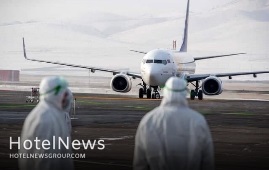
The Association of Iranian Airlines (AIA) on Sunday announced that it has no plan at present to suspend flights to and from Turkey due to the spread of a new coronavirus variant. “Flights between Iran and Turkey are operated on schedule and there is no plan yet to suspend them until [we receive] an official announcement from the National Headquarters for Coronavirus Control,” said Maqsoud As’adi-Samani, the secretary of the association. He added that the issue is to be conferred in the next session of the national headquarters. “Airlines flying to Turkey will [immediately] halt the service if the headquarters votes to its suspension.” Iranian Health Minister Saeed Namaki on Saturday issued an order, restricting travels to and from Turkey for a week in a bid to help contain the new coronavirus variant. In a letter to the interior minister, Namaki stressed the need for closing air and land borders with the neighboring country for a week. Flights between the two neighbors have repeatedly been suspended in recent months for the sake of coronavirus concerns though passengers are required to observe strict health protocols and hold a well-being certificate with a negative coronavirus PCR test result.
Create: Apr 5, 2021 Edit: Apr 5, 2021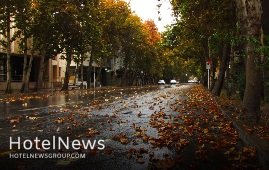
Over the past years, Tehran’s Vali-e Asr Street, famed as the longest in West Asia, has undergone countless maintenance works as a prerequisite for a possible UNESCO registration. The leafy street runs for over 17 kilometers from the railway station in the south of the metropolis to the Tajrish square in the north. It is lined with many shops, restaurants, parks, cinemas, and cultural centers. Tehran’s District 11 Mayor Nasrollah Abadian has recently talked about restoration works is has carried out on the southernmost section of the thoroughfare, which is situated in the district. “Vali-e Asr Street, which is the longest in West Asia, has undertaken extra maintenance and restoration works as a prerequisite for a possible UNESCO registration…. Four Kilometers of it is situated in the district 11 and others in the districts of 6, 3, and 1, respectively,” Abadian said. Landscaping and the beautification of urban spaces, flooring, and the protection of green spaces of the street are amongst tasks being practiced, he explained. “Vali-e Asr Street is the best example which witnesses the persistent exercises of creating the concept of Garden-Street as a destination of an urban area from the Safavid era up to the modern time,” according to the UNESCO website. “A variety of architectural styles from traditional to modern and eclectic is a representation of eastern and western values synthesis in a specific geographical point, which carries a true definition of an architectural and spatial place.” In the 19th century, the route once passed through Shemiran gardens, barren fields between Tehran and Shemiran, Yusef Abad, Abbas Abad, and Behjat Abad ending at its southernmost tip inside the then Qajar-era town of Tehran. Vali-e Asr Street, which is registered on Iran’s National Heritage list, was added to the UNESCO’s temporary list in 2019. The street is one of the main urban elements of the Iranian capital in the north-south direction.
Create: Apr 5, 2021 Edit: Apr 5, 2021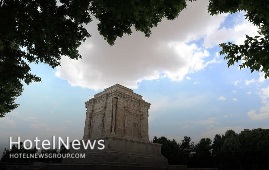
A total of 1,176,415 visits to the historical sites and natural sights of the northeastern Khorasan Razavi province was recorded during the two-week New Year (Noruz) holidays (March 20-April 2). Historical city of Tus, the mausoleum of the epic Persian poet Ferdowsi, the mausoleums of poets Attar and Khayyam, and Naderi Garden were among the most visited sites, the deputy provincial tourism chief said on Sunday. Strict health protocols were demanded to be observed by the travelers during their visits, Marjan Akbari added. The capital city of Mashhad is home to the holy shrine of Imam Reza (AS), the eighth Shia Imam, which attracts thousands of pilgrims from various Iranian cities, neighboring countries, and even across the globe. According to official statistics, some 37 million Iranian pilgrims and travelers visited the shrine city of Mashhad during the first ten months of the Iranian calendar year 1398 (March 21, 2019- March 20, 2020). Dozens of five-star hotels and hostels are dotted around the holy shrine. The metropolis has the highest concentration of water parks in the country, and it also embraces a variety of cultural and historical sites that are generally crowded.
Create: Apr 5, 2021 Edit: Apr 5, 2021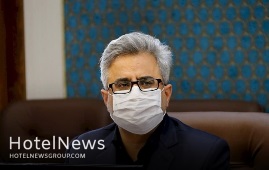
Iranians made some 1.3 million overnight stays in the official accommodation centers across the country during the first week of the Persian New Year (Noruz) holidays, which started on March 20, the deputy tourism minister has announced. The average occupancy rate of the residential centers has reached around 30 percent during the mentioned period, ILNA quoted Vali Teymouri as saying on Sunday. Appreciating tourists and travelers who followed health protocols during their trips, the official also thanked those who delayed or postponed their travels to help the tourism industry deal with the coronavirus outbreak. Last year the country went into lockdown during Noruz holidays due to the coronavirus pandemic. Iranians made over 74 million overnight stays during the two-week Persian New Year holidays in 1398 (March 21-April 2, 2019). Early in March, President Hassan Rouhani declared new travel bans for cities situated in the “red” and “orange” zones to combat the new COVID-19 variant. Rouhani called on people to avoid traveling during the Iranian New Year holidays to help contain the spread of coronavirus. He said it would be forbidden to make trips to cities marked as “red” and “orange” in terms of the prevalence of COVID-19. “We request people to avoid traveling during Noruz holidays for the sake of their own health… It will be forbidden to travel to red and orange towns and cities,” he said. “No one should make any plans to travel to these cities,” he stressed. Late in February, the tourism minister, Ali-Asghar Mounesan, said despite all the obstacles and issues and the outbreak of the coronavirus, the country’s tourism sector is still alive and dynamic. Noruz ceremonies and trips, if practiced under health protocols, could be beneficial for the revival of the tourism industry and handicrafts, which have been severely affected by the coronavirus pandemic in many provinces, the minister explained. Iranians traditionally make hundreds of thousands of domestic trips during the New Year holidays, when most businesses and workplaces are closed, as are schools.
Create: Apr 3, 2021 Edit: Apr 3, 2021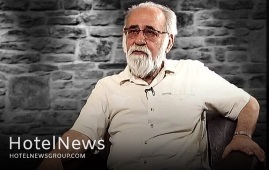
Mir-Abedin Kaboli, a celebrated Iranian archaeologist who took part in various excavations across the Iranian plateau, died on Thursday at the age of 76. Born in 1943 in Babol, northern Iran, Kaboli started his professional career at the general directorate of archeology in 1971 and since then he has participated in many archeological excavations in Haft Tappeh, Tapeh Abu Fandowa, and Shahdad, amongst some other sites, ISNA reported. Excavations at Shahdad, an ancient site in southeast Kerman province, was one of his most famed missions, which yielded jewelry from the 3rd millennium BC. An archaeological team, led by Kaboli, discovered the ruins of a developed ancient city with industrial and residential areas and a graveyard after fourteen stages of excavations in Shahdad. Kaboli was honored in 2016 as one of the greats of Iran's cultural heritage. He died of kidney failure in his hometown.
Create: Apr 3, 2021 Edit: Apr 3, 2021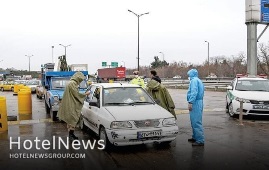
People who would go on a trip during the Noruz holidays, which begins on Saturday, will be strictly supervised by the committee of travel services coordination, the deputy tourism minister has said. The committee, which includes members from the tourism and health ministries as well as the police personnel, will monitor the implementation of the health protocols by the tourists and travelers during the holiday, IRNA quoted Vali Teymouri as saying on Tuesday. As people have been prevented from traveling for more than a year due to the outbreak of the coronavirus, it has been decided to ease the travel restrictions to improve society’s vitality, the official added. However, following strict health protocols on the way and in the destinations is necessary and will be monitored, he noted. Earlier this week, the Transport and Urban Development Minister Mohammad Eslami announced that no ban on Noruz travels has been imposed for people who would use public transport. Earlier this month, President Hassan Rouhani declared new travel bans for cities situated in the “red” and “orange” zones to combat the new COVID-19 variant. Rouhani called on people to avoid traveling during the Iranian New Year holidays to help contain the spread of coronavirus. He said it would be forbidden to make trips to cities marked as “red” and “orange” in terms of the prevalence of COVID-19. We request people to avoid traveling during Noruz holidays for the sake of their own health… It will be forbidden to travel to red and orange towns and cities,” he said. “No one should make any plans to travel to these cities,” he stressed. Late in February, the tourism minister, Ali-Asghar Mounesan, said despite all the obstacles and issues and the outbreak of the coronavirus, the country’s tourism sector is still alive and dynamic. Noruz ceremonies and trips, if practiced under health protocols, could be beneficial for the revival of the tourism industry and handicrafts, which have been severely affected by the coronavirus pandemic in many provinces, the minister explained. Iranians traditionally make hundreds of thousands of domestic trips during the New Year holidays, when most businesses and workplaces are closed, as are schools.
Create: Mar 19, 2021 Edit: Mar 19, 2021